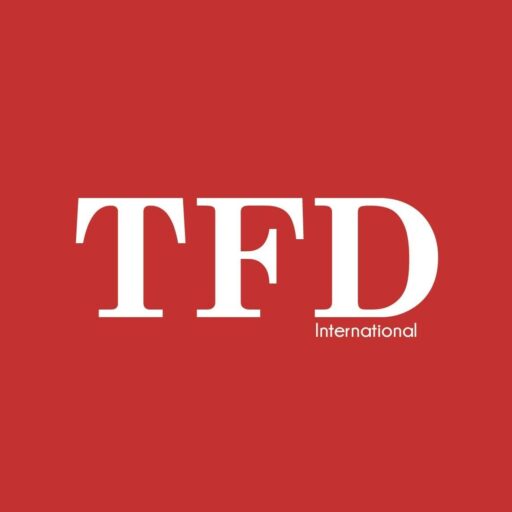In an era marked by rising global uncertainty, persistent humanitarian crises, and widening development gaps, the international NGO sector finds itself at a critical juncture. The recent and significant pullback of USAID funding – one of the most influential sources of development aid worldwide – has created a vacuum that threatens to undermine years of progress. While this decision has been shaped by evolving geopolitical and domestic priorities in the United States, its ripple effects are being felt acutely in countries where foreign assistance has served as a lifeline for millions of marginalized and vulnerable communities.
From health and education to climate resilience, agriculture, and gender empowerment, USAID’s legacy in shaping development outcomes is both deep and wide. However, this funding contraction has exposed an uncomfortable truth that many in the sector have long suspected but hesitated to confront: our collective over-reliance on a single-source donor model is unsustainable. More than just a funding challenge, this moment demands a re-evaluation of our systems, values, and strategies for sustainable development.
The Fallout: A Sector at a Crossroads: The impact of the funding pullback has been swift and severe. Across South Asia, Sub-Saharan Africa, Latin America, and even in middle-income regions, many community-based organizations are reporting operational crises. Programs that once served hundreds of thousands are now running on life support or being shuttered altogether. Vital services – including maternal healthcare, nutrition programs, water and sanitation initiatives, and education access for girls – are being curtailed.
Small and medium-sized NGOs, particularly those reliant on a narrow donor base, are disproportionately affected. Many have had to make difficult decisions such as staff layoffs, project cancellations, and the scaling down of outreach activities. Beyond the material losses, this financial vacuum has eroded hard-earned community trust, destabilized long-term interventions, and stymied progress toward the Sustainable Development Goals (SDGs).
The situation also highlights structural fragilities: the lack of financial reserves in smaller organizations, limited access to domestic funding streams, and a gap in strategic partnerships beyond traditional donor ecosystems.
A Deeper Diagnosis: Dependency and Donor-Centric Models: The USAID pullback may be the catalyst, but the roots of this crisis run deeper. For decades, the NGO sector has grown around a donor-centric model that often places international agendas above local needs. While donor funding – particularly from bilateral agencies – has powered impactful programs, it has also, in some contexts, created an ecosystem of dependency that limits organizational autonomy and stifles innovation.
In many countries, donor priorities have shaped program designs, monitoring frameworks, and even staffing structures. This has often come at the cost of contextual relevance and long-term sustainability. Moreover, organizations have sometimes become caught in a grant cycle that prioritizes compliance and reporting over impact and learning.
Now, as this model begins to shift, the question is not merely how to replace lost funding, but how to reimagine development work itself. Can NGOs transition from aid recipients to self-sustaining, community-rooted change agents? Can they build resilience not only in the communities they serve but also within their own institutions?
Systemic Reflection: Rethinking Development Financing: To answer these questions, the sector must take a bold and honest look at its funding architecture. It’s not enough to seek new donors; we must seek new models.
1. Diversification of Funding Streams: Diversifying revenue is no longer a strategic choice – it is a necessity. NGOs must develop blended finance models that combine:
= Local philanthropy: Encouraging domestic giving through tax incentives, public campaigns, and community-based fundraising.
= Social enterprise: Generating mission-aligned income through fee-for-service programs, vocational training centers, or microenterprises.
= Multilateral and non-traditional donors: Tapping into climate funds, innovation labs, diaspora networks, and development banks.
= Private sector partnerships: Engaging corporates through shared-value approaches and CSR collaboration.
= Crowdfunding and digital fundraising: Using technology to engage individual donors globally.
A robust, multi-channel revenue model will enable organizations to remain agile during donor transitions and maintain mission fidelity.
2. Local Ownership and Capacity Building: Sustainability begins with agency. Programs that are locally designed, led, and managed tend to enjoy greater legitimacy, effectiveness, and longevity.
International NGOs must prioritize south-south collaboration and transition leadership to local entities. Donors must move from subcontracting to co-creation, and funding structures should build in flexible overhead support that strengthens local organizational systems – from governance and leadership to finance and MEL.
3. Policy Engagement and Public Financing: Too often, NGOs operate in parallel to public systems. This moment provides an opportunity to realign.
= Advocate for increased national budget allocations toward health, education, and social welfare.
= Collaborate with local and provincial governments on program delivery and capacity strengthening.
= Position civil society as a key stakeholder in policy design and public service monitoring.
The long-term goal should be to influence systems, not just deliver services.
4. Innovation and Technology Integration: The digital divide remains real, but so too does the opportunity that technology presents. NGOs should:
= Digitize program delivery (e.g., telemedicine, e-learning, mobile financial literacy).
= Use data analytics to inform programming and resource allocation.
= Embrace blockchain and AI for transparency, beneficiary tracking, and fraud prevention.
Donors and intermediaries should fund digital transformation as a core organizational need, not just a programmatic add-on.
5. Strengthened Monitoring, Evaluation, and Learning (MEL): Strong MEL frameworks are essential for:
= Proving and improving impact.
= Adapting to changing contexts.
= Building donor and community trust.
Impact-driven NGOs are more likely to attract diversified funding and strategic partners. MEL systems must go beyond metrics to capture stories of change, community feedback, and inclusive learning loops.
From Crisis to Opportunity: What the Sector Must Do Now: While the present situation is daunting, it offers an inflection point – a chance to reset, rebuild, and realign. Below are ten strategic actions NGOs, donors, and governments should collectively pursue:
1. Create a national civil society sustainability task force to assess risks, explore innovations, and guide the transition process.
2. Establish pooled funding mechanisms (national and regional) to support core costs and long-term investments in local NGOs.
3. Accelerate NGO registration and compliance reforms to ease local fundraising and business operations.
4. Foster partnerships with academia and research institutions to build evidence-based programming.
5. Promote youth leadership and innovation through fellowships, seed funding, and mentoring.
6. Invest in storytelling and visibility campaigns to shift public narratives from aid to agency.
7. Champion inclusive governance by bringing community voices into decision-making processes.
8. Launch resilience hubs and innovation labs for peer learning, cross-sector collaboration, and shared services.
9. Engage with diaspora communities as funders, mentors, and advocates.
10. Document and disseminate best practices across countries and regions to foster replication and scale.
The Donor’s Role: From Funder to Facilitator: As NGOs recalibrate, so must donors. The future of development cooperation hinges on humility, partnership, and systems thinking.
USAID and similar agencies must invest in exit strategies that are consultative and phased. They should shift focus from project-based funding to ecosystem-building – enabling coalitions, infrastructure, and public goods that outlast individual grants.
Co-financing models with governments, matched funding for local philanthropy, and impact investment mechanisms are some of the pathways forward. Donors must also address the asymmetry in power and decision-making by embracing participatory grantmaking and community-led accountability.
A Case for Optimism: Stories from the Field: Despite the daunting scenario, many organizations are already charting new paths:
= In Kenya, a rural education NGO transitioned to a social enterprise model, offering affordable teacher training programs that generate income and improve quality.
= In Bangladesh, a women’s health initiative leveraged mobile clinics and local micro-donations to sustain services after donor exits.
= In Colombia, an alliance of youth-led NGOs created a crowdfunding platform that supports community innovation projects in urban slums.
These stories prove that when NGOs are empowered, resourced, and trusted, they innovate and endure.
Towards a Resilient, Locally-Led Future: The USAID funding pullback is not just a disruption – it is a wake-up call. It demands that the NGO sector shed outdated models and embrace a future rooted in resilience, innovation, and local ownership. If we seize this moment with courage and clarity, we can build a sector that is not only more sustainable but also more just, inclusive, and impactful.
We must ask ourselves: What does sustainability truly mean? Is it the continuity of funding or the empowerment of people? Is it programs that last or systems that evolve?
The answer lies in collective action: In collaboration over competition; in shifting the narrative from charity to justice. The path ahead is challenging, but it is also full of possibility. The question is not whether we can adapt – but whether we will.
Home Views & Opinions Navigating the shift: Rethinking sustainability after the USAID funding pullback
Sign in
Welcome! Log into your account
Forgot your password? Get help
Password recovery
Recover your password
A password will be e-mailed to you.





